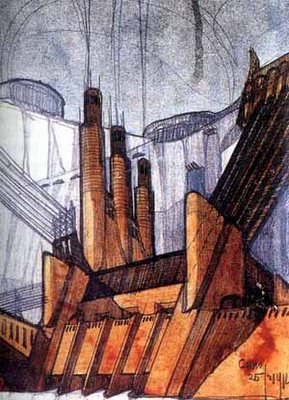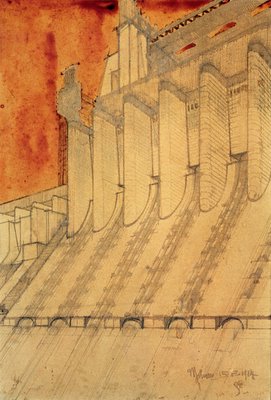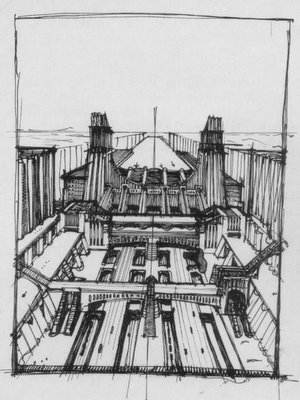
As the Independent reported this morning, England's river Mersey may soon become "the first river in Britain to generate electricity from its tides" – using a tidal fence.

Plans are afoot to take advantage of "the Mersey's vast renewable energy potential by constructing a tidal power fence which, according to initial estimates, could generate up to 2,000 megawatts of electricity, enough to power 15 per cent of the North-west's electricity requirements. The Mersey offers more tidal power potential than virtually any other river in Europe, by virtue of its 10-metre tidal range and strong currents which are a by-product of its shape and its position on England's windy North-west coast."
It is, in other words, about to become a machine.

First, water at high tide will be shut into a sequence of locks and gates; in this respect, the tidal fence is not unlike a standard shipping canal. But then, as the river drops with the tide, the trapped water – now at a higher elevation – will be "allowed to escape through the turbines of a hydroelectric plant."
This will turn the water's gravitational potential energy into electricity.

Tidal fences, however, are only one technical option – there are also tidal turbines, for example, and there are important differences between turbines and fences. (For more on this, see Daily Kos).
But why should we care about tidal power at all?
"Tidal power is more dependable than wind due to its predictable nature thus making it a better source of electrical energy for feeding the baseload of the national grid. The tides run almost 6 hours in one direction and then reverse and run for 6 hours in the opposite direction thus giving a power source that is available 24 hours a day unlike wind and solar."
Or, as we read in this press release: "Seawater is 832 times as dense as air; therefore the kinetic energy available from a 5-knot ocean current is equivalent to a wind velocity of 270 km/h."
The point is that tidal power kicks wind power's a**.

Meanwhile, the technology itself verges on the occult.
Norway, for instance, is experimenting with moon power at a new station built by Hammerfest Strøm AS: "The rise and fall of the sea, caused by the Moon's gravitational tug on the Earth, could be generating electricity for hundreds of thousands of homes within five years if the new Norwegian power station proves successful. The power station, which resembles an underwater windmill, began generating electricity for the town of Hammerfest. Although still largely a prototype, the generator is the first in the world to harness the power of the open sea and be connected to an electricity grid." (See the details in their own technical PDF).
So, sure, all tides are lunar, and therefore all tidal power is lunar power... but it's still fascinating.
It's like something straight out of Aleister Crowley.

Meanwhile, the images that you're seeing scattered throughout this post are all by Italian Futurist architect, Antonio Sant'Elia. Not a single one of them is of a tidal fence, a tidal turbine, or even of a hydroelectric dam; but his obvious exuberance for monumental power-generation structures is: 1) so bizarre it's almost touching; and 2) just waiting to be copied by a new generation of architects, gamers, novelists and filmmakers.

Herculean and abstract concrete structures humming with hydroelectric power. Submerge ten of these things in the Mersey... and England just got a whole lot brighter.
No comments:
Post a Comment